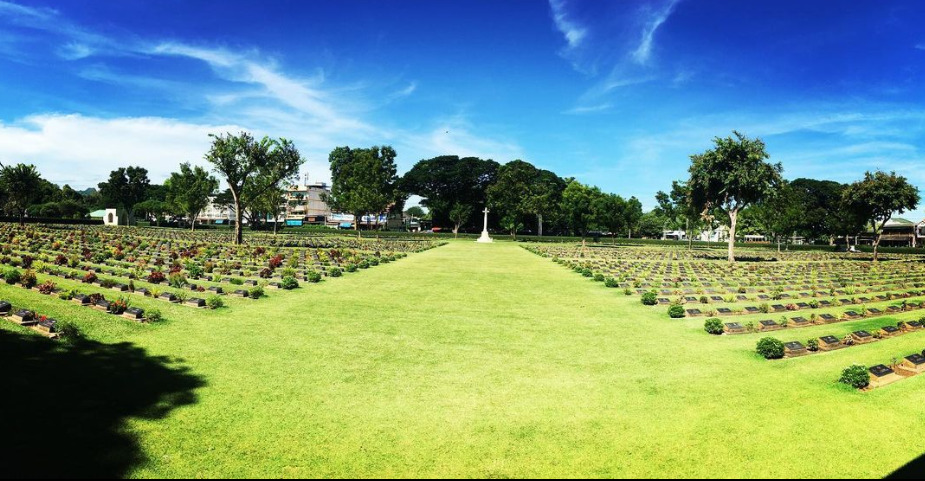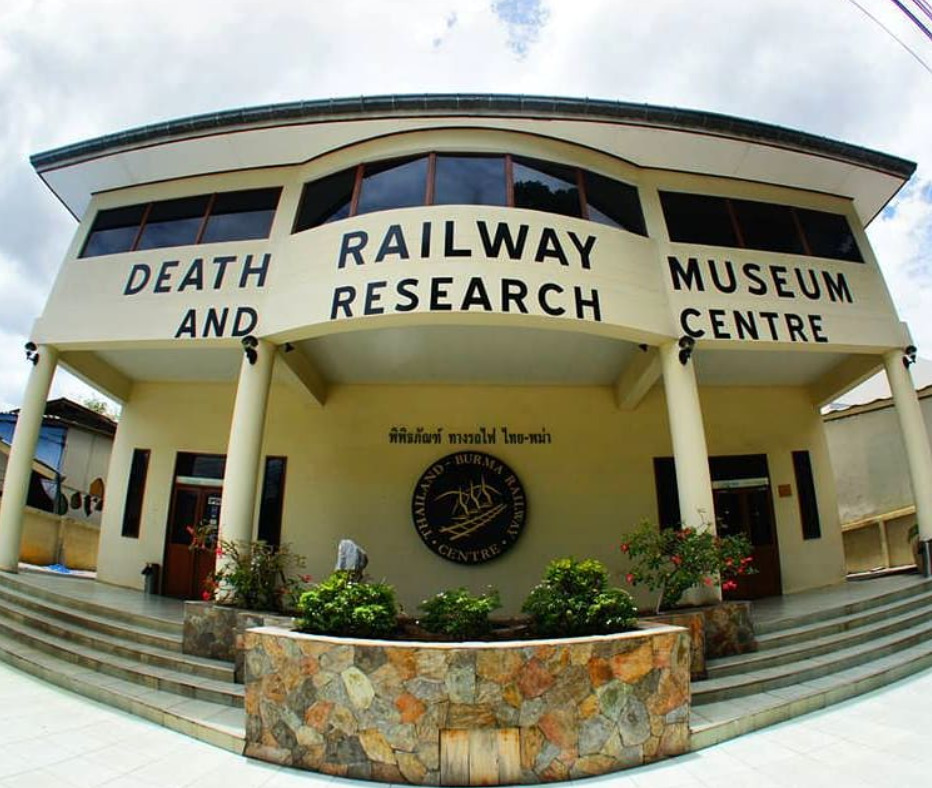Kanchanaburi Attractions: A Comprehensive Guide
Kanchanaburi, a province in western Thailand, is a popular tourist destination known for its rich history, natural beauty, and cultural attractions. The province is home to the famous Bridge on the River Kwai, which was built by Allied prisoners of war during World War II. Visitors can take a walk or ride on the bridge and learn about its history at the nearby museum.


In addition to the Bridge on the River Kwai, Kanchanaburi offers a variety of other attractions for tourists. The Erawan National Park is a must-visit destination for nature lovers, featuring beautiful waterfalls, hiking trails, and wildlife. The Kanchanaburi War Cemetery is another important historical site, honoring the soldiers who died during the construction of the Death Railway. Other popular activities include river cruises, elephant rides, and exploring the local markets and temples.
Table of Contents
Historical Significance
World War II and Death Railway
Kanchanaburi is a city with a rich history, particularly during World War II. The city was occupied by Japanese soldiers during the war, and they used prisoners of war (POWs) to build the Thailand-Burma Railway, also known as the Death Railway. The railway was built to connect Thailand with Burma, and the conditions for the prisoners were harsh. Many of them died due to starvation, disease, and Allied bombs.
Today, the Death Railway is a popular tourist attraction in Kanchanaburi. Visitors can take a ride on the railway and learn about its history at the Thailand-Burma Railway Centre and Kanchanaburi War Cemetery.
Bridge on the River Kwai


The Bridge on the River Kwai is another famous attraction in Kanchanaburi. The bridge was built by the Japanese during World War II as part of the Death Railway. The bridge was immortalized in the 1957 film “The Bridge on the River Kwai.”
Visitors can walk across the bridge and learn about its history at the nearby JEATH War Museum. The museum is named after the countries involved in the construction of the railway: Japan, England, Australia, Thailand, and Holland.
Prisoners of War
The POWs who worked on the Death Railway were from various countries, including England, Australia, and the Netherlands. Many of them died during its construction and are buried at the Kanchanaburi War Cemetery.
The cemetery is maintained by the Commonwealth War Graves Commission and is a peaceful place to reflect on the sacrifices made during World War II.
Kanchanaburi’s World War II history is a significant part of its identity. Visitors to the city can learn about the Death Railway, the Bridge on the River Kwai, and the sacrifices made by the POWs who worked on the railway.
Museums and Memorials
Kanchanaburi War Cemetery


Kanchanaburi War Cemetery is a memorial to the Allied prisoners of war who died while constructing the Death Railway during World War II. The cemetery is located in the city of Kanchanaburi and is maintained by the Commonwealth War Graves Commission. It contains the graves of 6,982 Commonwealth soldiers who died during the construction of the railway.
JEATH War Museum
The JEATH War Museum is a museum in Kanchanaburi that documents the history of the Death Railway. The museum is located inside the grounds of Wat Chaichumphon temple and is named after the countries involved in the construction of the railway: Japan, England, America, Australia, Thailand, and Holland. The museum contains photographs, artifacts, and exhibits that depict the conditions under which the prisoners of war lived and worked.
Death Railway Museum


The Death Railway Museum is a museum in Kanchanaburi that is dedicated to the history of the Death Railway. The museum is located near the Bridge over the River Kwai and contains exhibits, photographs, and artifacts that document the construction of the railway and the conditions under which the prisoners of war lived and worked.
Hellfire Pass Memorial Museum
The Hellfire Pass Memorial Museum is a museum in Kanchanabur i that is dedicated to the history of the construction of the Death Railway. The museum is located near the site of the Hellfire Pass, a section of the railway that was cut through solid rock by the prisoners of war. The museum contains exhibits, photographs, and artifacts that document the construction of the railway and the conditions under which the prisoners of war lived and worked.
Thailand-Burma Railway Centre


The Thailand-Burma Railway Centre is a museum in Kanchanaburi that is dedicated to the history of the Death Railway. The museum is located near the Bridge over the River Kwai and contains exhibits, photographs, and artifacts that document the construction of the railway and the conditions under which the prisoners of war lived and worked.
In Kanchanaburi, there are several museums and memorials dedicated to the history of the Death Railway. These museums and memorials provide visitors with an opportunity to learn about the history of the railway and the conditions under which the prisoners of war lived and worked. Some of the notable museums and memorials include the Kanchanaburi War Cemetery, JEATH War Museum, Death Railway Museum, Hellfire Pass Memorial Museum, and Thailand-Burma Railway Centre. Visitors to Kanchanaburi should consider visiting these museums and memorials to gain a better understanding of the history of the Death Railway.
Natural Attractions
Kanchanaburi is blessed with an abundance of natural beauty, from stunning waterfalls to majestic mountains and everything in between. Here are some of the best natural attractions in the area:
Erawan National Park


Erawan National Park is a must-visit destination for nature lovers. The park is home to the stunning Erawan Falls, a seven-tiered waterfall that is considered one of the most beautiful in Thailand. Visitors can hike to the top of the falls, swim in the crystal-clear pools, and enjoy the lush tropical surroundings. The park is also home to a wide variety of wildlife, including elephants, fish, and birds.
Sai Yok National Park


Sai Yok National Park is another natural wonderland in Kanchanaburi. The park is home to the Sai Yok Waterfall, a stunning cascade that drops into the River Kwai. Visitors can swim in the pools at the base of the falls, hike along the river, and explore the park’s many hiking trails. The park is also home to a wide variety of wildlife, including elephants, monkeys, and birds.
Lawa Cave
Lawa Cave is a unique natural attraction in Kanchanaburi. The cave is home to a series of underground chambers filled with stunning rock formations and ancient stalactites and stalagmites. Visitors can explore the cave on a guided tour, which takes them through the maze of tunnels and chambers. The cave is also home to a wide variety of wildlife, including bats and fish.
Whether you’re looking for stunning waterfalls, majestic mountains, or unique underground caves, Kanchanaburi has something for everyone. The area’s national parks are a great place to start, with Erawan National Park, Sai Yok National Park, and Lawa Cave all offering unique natural wonders to explore.
Religious Sights
Kanchanaburi is home to several religious sites that offer a glimpse into the rich culture and heritage of Thailand. These sites are not only significant from a religious point of view but also attract tourists from all over the world due to their architectural beauty and serene surroundings.
Wat Tham Sua


One of the most popular religious sites in Kanchanaburi is Wat Tham Sua, which is also known as the Tiger Cave Temple. This temple is located on a hill and offers a stunning view of the surrounding area. The temple is named after a cave that resembles a tiger’s paw print. Visitors can climb the 157 steps to reach the cave and see the impressive Buddha statue inside.
Apart from the cave, Wat Tham Sua also has several other attractions, including a pagoda, a golden Buddha statue, and a meditation center. Visitors can also enjoy the peaceful surroundings and feed the monkeys that reside in the area.
Wat Ban Tham


Another popular religious site in Kanchanaburi is Wat Ban Tham, which is located in the countryside and is known for its unique architecture. The temple is built on a hill and features a series of caves that contain Buddha statues and other religious artifacts. Visitors can climb the stairs to reach the top of the hill and enjoy the stunning view of the surrounding area.
Apart from the caves, Wat Ban Tham also has several other attractions, including a pagoda, a meditation center, and a museum that showcases the history of the temple. Visitors can also participate in the temple’s daily activities, such as chanting and offering food to the monks.
Travel and Accommodation
Getting There
Kanchanaburi is a popular tourist destination in Thailand, located about 130 kilometers west of Bangkok. The most common ways to get there are by train or bus. Visitors can take a train from Bangkok’s Thonburi Railway Station to Kanchanaburi. The train ride takes around 3 hours and offers stunning views of the countryside. Alternatively, visitors can take a bus from Bangkok’s Southern Bus Terminal to Kanchanaburi. The bus ride takes around 2.5 hours.
Hotels and Homestays
Kanchanaburi offers a range of accommodation options for visitors, including hotels, guesthouses, and homestays. There are many hotels and guesthouses located in the city center, near the River Kwai Bridge, and along the scenic River Kwai. Visitors can also choose to stay in a homestay, which offers a more authentic experience of Thai culture. Some popular homestays in Kanchanaburi include the Baan Suan Chan Homestay and the Ban Sabai Sabai Homestay.
Nightlife and Entertainment
Kanchanaburi may not be known for its nightlife, but there are still plenty of entertainment options for visitors. There are many restaurants and bars located in the city center, near the River Kwai Bridge, and along the scenic River Kwai. Visitors can enjoy live music, karaoke, and traditional Thai dance performances at many of these venues. For those looking for more adventurous activities, there are also opportunities to go trekking, kayaking, and rafting in the surrounding countryside.
Overall, Kanchanaburi is a great destination for visitors looking to experience the beauty and culture of Thailand. With its stunning natural scenery, rich history, and range of accommodation options, Kanchanaburi is sure to delight visitors of all ages and interests.
